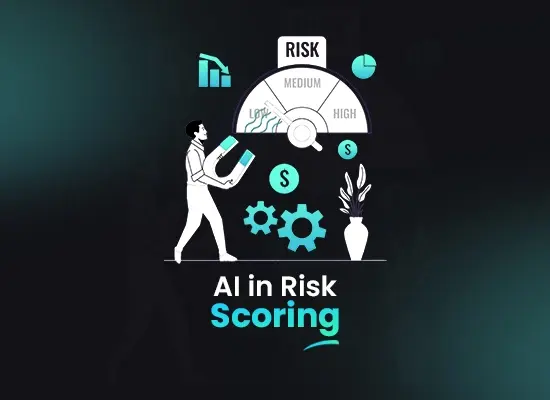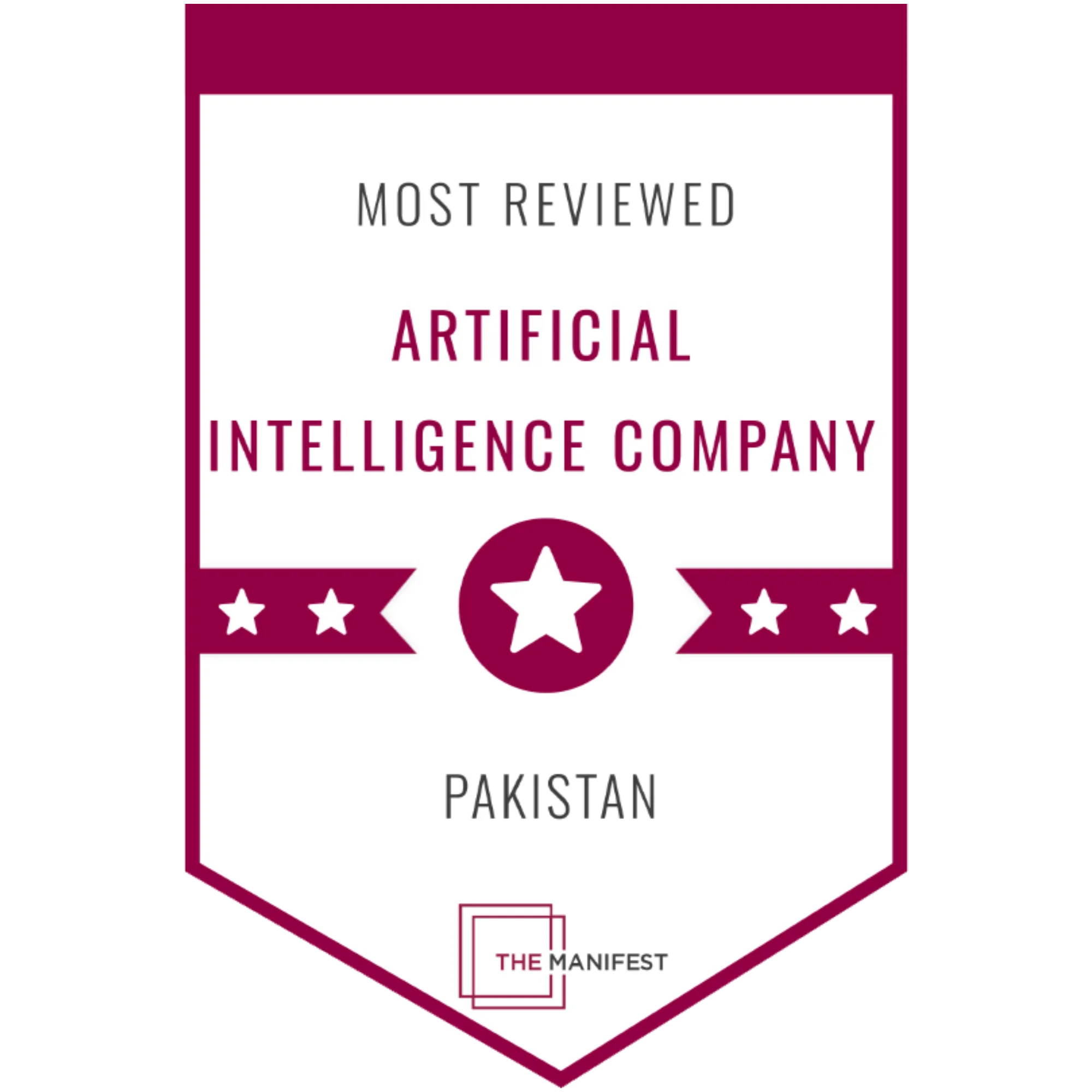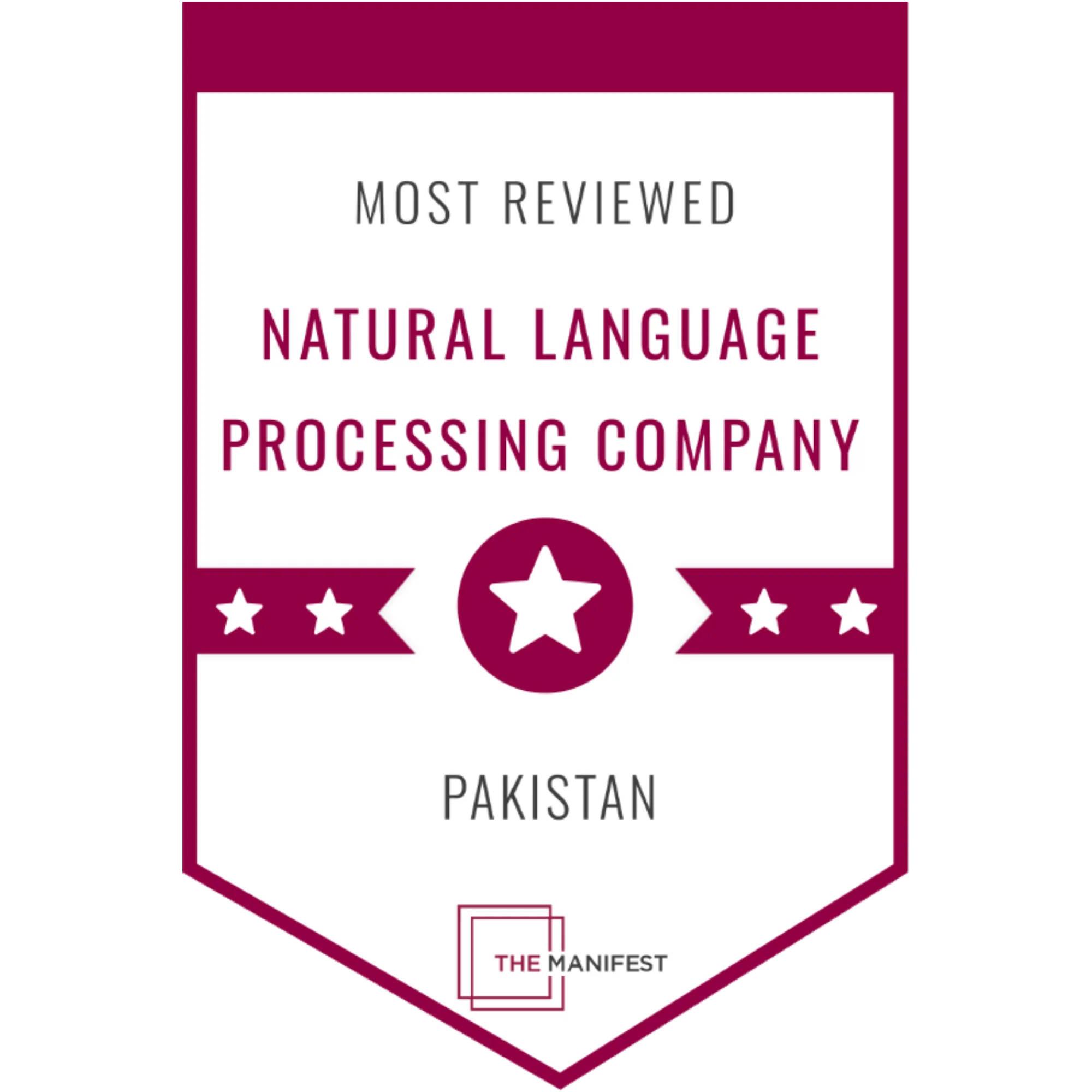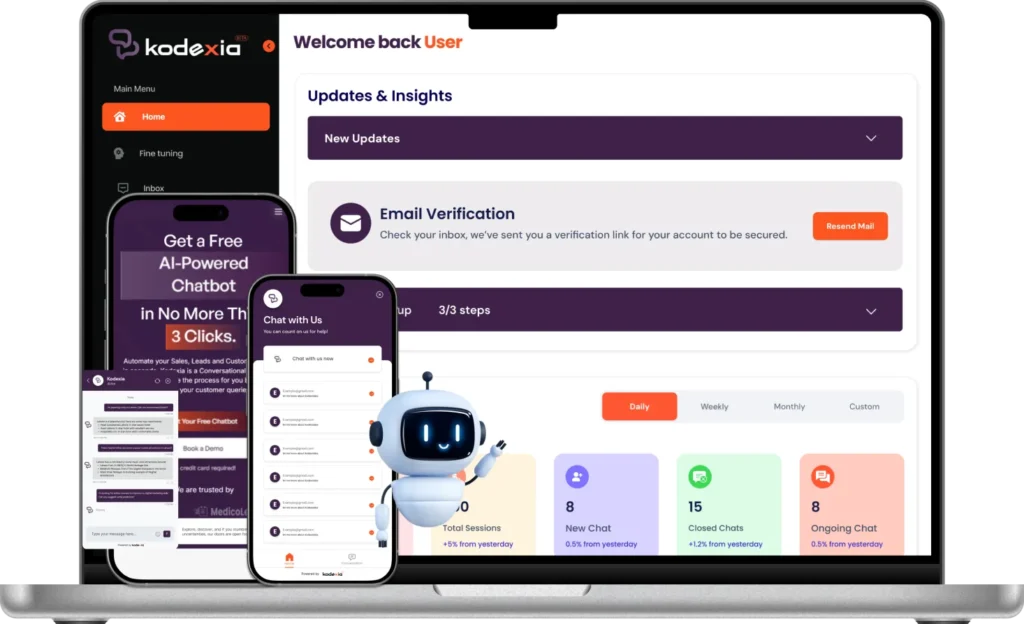AI in Dynamic Pricing: Pricing Strategies for Rapid B2B Growth Marketing
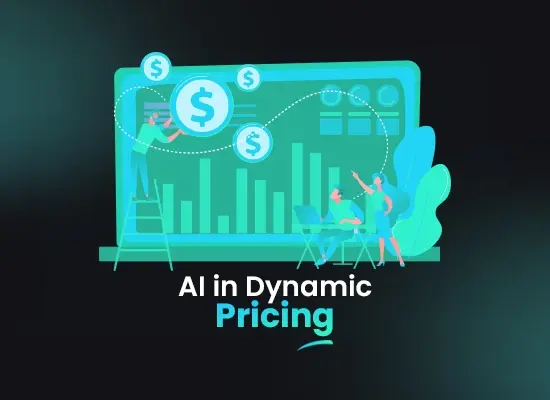
Contents
Dynamic pricing has emerged as a powerful strategy for businesses seeking to optimise revenue and respond to market dynamics. By continuously adjusting prices based on factors such as demand, competition, and market conditions, dynamic pricing can help businesses maximise profitability and stay competitive. In this blog, we will explore the importance of AI in dynamic pricing and how it can improve pricing strategies for rapid B2B growth marketing.
What is Dynamic Pricing?
Dynamic pricing involves adjusting prices in real time to reflect market fluctuations. It allows businesses to set prices based on supply and demand dynamics, enabling them to capture the maximum value from each transaction. By moving away from static pricing models, businesses can effectively adapt to changing market conditions and achieve optimal pricing.
Benefits of Dynamic Pricing:
Dynamic pricing refers to continuously adjusting prices in real time based on various factors such as demand, competition, and market conditions. Unlike fixed prices, dynamic pricing allows businesses to set prices that reflect the current state of the market, maximising revenue and profitability. Here are some benefits of dynamic pricing:

Optimised Revenue:
Dynamic pricing enables businesses to capture the maximum value from each transaction. By adjusting prices based on factors like demand and availability, businesses can charge higher prices during peak periods and lower prices during off-peak times. This leads to optimised revenue and increased profitability.
Competitive Advantage:
In a competitive marketplace, automated pricing allows businesses to be proactive and responsive to market changes. By monitoring competitor prices and market trends, businesses can adjust their prices accordingly and stay competitive. This flexibility gives them an edge over competitors with static pricing models.
Demand Management:
Dynamic pricing helps manage demand fluctuations effectively. During periods of high demand, businesses can raise prices to regulate demand and prevent stockouts. Conversely, during periods of low demand, companies can lower prices to stimulate demand and minimise inventory holding costs.
Automated Pricing Strategy Testing:
Dynamic pricing allows businesses to test different automated pricing strategies in real-time and assess their impact on sales and profitability. By experimenting with different price points and observing customer behaviour, businesses can refine their pricing strategies and optimise results.

Factors Affecting Dynamic Pricing Decisions:
Several factors influence dynamic pricing decisions. Here are some key factors to consider:
Demand:
Understanding demand patterns is crucial for dynamic pricing. Factors such as seasonality, time of day, customer preferences, and market trends impact demand. By analysing historical data and monitoring real-time demand signals, businesses can adjust prices accordingly to optimise revenue.
Competition:
Monitoring competitor prices is essential to remain competitive. Businesses need to consider competitor pricing strategies, market positioning, and automated pricing dynamics. Analysing competitor pricing trends can help determine optimal price differentials and adjust prices accordingly.
Market Conditions:
Dynamic pricing decisions are influenced by market conditions, including overall economic factors, industry trends, and market stability. Businesses need to assess market conditions to determine if pricing adjustments are warranted.
Cost Considerations:
Pricing decisions should consider costs associated with production, procurement, and operational expenses. Businesses need to balance maximising revenue and maintaining profitability by considering cost factors when adjusting prices.
Customer Segments:
Analysing customer segmentation and their preferences is critical for dynamic pricing. Different customer segments may have varied price sensitivities and willingness to pay. By tailoring prices to specific customer segments, businesses can improve customer satisfaction and drive sales.
Product Lifecycle:
The stage of a product’s lifecycle can impact automated pricing decisions. For new products, an aggressive pricing strategy may be required to gain market share. As the product matures, pricing adjustments may be necessary to maintain competitiveness and maximise profitability.
Role of AI in Pricing:
The role of AI in pricing is to analyse large amounts of data and provide valuable insights to businesses for making pricing decisions. Artificial Intelligence algorithms can track market changes, competitor pricing, customer behaviour, and other relevant factors in real time. By processing and interpreting this data, AI enables businesses to understand market trends and make informed pricing decisions.
Additionally, AI in pricing can predict demand patterns, forecast price elasticity, and offer personalised pricing strategies based on individual customer preferences. With AI’s scalability and automation, businesses can efficiently manage complex pricing calculations across various product portfolios and ensure consistent and accurate pricing across channels.
Advantages of AI in Pricing:
One of the key advantages of AI in pricing is its ability to monitor market changes and trends in real time. By continuously tracking factors like demand fluctuations, competitor pricing, and inventory levels, AI algorithms can provide businesses with valuable insights for effective decision-making. This agility ensures that businesses are always up-to-date with evolving market conditions, optimising revenue, and staying competitive.
Another significant advantage of AI in pricing is its predictive analytics capabilities. AI in customer churn prediction or segmentation analyse historical data, customer behaviour patterns, and other external factors to forecast demand patterns and predict price elasticity. This allows businesses to identify optimal pricing strategies that balance revenue maximisation with customer satisfaction. Personalisation is another area where AI shines in automated pricing. AI algorithms can analyse customer data, segment customers, and offer personalised pricing, discounts, or incentives based on individual preferences, behaviour, and purchase history.
This level of personalisation enhances AI in customer service, fosters loyalty, and drives repeat sales. Scalability and automation are also significant benefits of AI in dynamic pricing. AI-powered systems can handle complex pricing calculations across a large product portfolio, minimising manual effort and errors. This scalability allows businesses to efficiently scale their pricing strategies regardless of the size and complexity of their product offerings. Automation through AI ensures consistent and accurate pricing across various channels, saving time and resources for businesses.
Importance of AI in pricing:
AI plays a crucial role in enabling businesses to effectively implement dynamic pricing strategies. Here’s why AI is essential in this context:

Efficient Data Analysis:
AI algorithms are capable of analysing vast volumes of data quickly and accurately. This enables businesses to extract valuable insights from customer behaviour, competitor pricing, and market trends. By leveraging AI-powered data analysis, businesses can make informed pricing decisions based on real-time and historical data, ensuring competitiveness in the market.
Real-time Decision-making:
One of the key benefits of AI in pricing is its ability to monitor market changes in real-time. AI-powered systems can continuously track factors such as demand fluctuations, competitor pricing, and inventory levels. This allows businesses to make pricing adjustments swiftly and effectively, ensuring they are always in sync with market conditions.
Predictive Analytics:
AI algorithms can forecast demand patterns and predict price elasticity, helping businesses identify optimal pricing strategies. By understanding customer behaviour and market trends, businesses can proactively adjust prices to capture maximum demand and revenue. AI-driven predictive analytics provide businesses with a competitive advantage by enabling them to stay ahead of market trends.
Personalisation:
AI in pricing can enable businesses to tailor pricing strategies based on individual customer behaviour, preferences, and purchase history. By analysing customer data, AI algorithms can segment customers and offer personalised pricing, discounts, or incentives. This level of personalisation enhances the customer experience, fosters loyalty, and drives repeat sales.
Scalability and Automation:
AI in pricing systems can handle complex pricing calculations across a large product portfolio, minimising manual effort and errors. With AI, businesses can scale their pricing strategies efficiently, irrespective of the size and complexity of their product offerings. Automation through AI ensures consistent and accurate pricing across various channels, saving time and resources.
AI-Driven Pricing Strategies for Rapid B2B Growth Marketing:
AI in pricing for rapid B2B growth marketing involves leveraging artificial intelligence technologies to optimise various aspects of a business’s operations and decision-making processes. Some key strategies include:
Automated Pricing for Different Customer Segments:
AI can analyse customer segmentation, data, preferences, and purchase history to create personalised pricing strategies for different segments. This ensures that pricing aligns with the value perceived by each customer group, increasing customer satisfaction and driving B2B growth marketing.
Real-time Pricing Adjustments:
AI can monitor market conditions, competitor pricing, and customer behaviour in real time. This allows businesses to make immediate pricing adjustments to optimise revenue, respond to market dynamics, and stay competitive.
Competitive Intelligence and Pricing Benchmarking:
AI can gather and analyse data on competitors’ pricing strategies, promotions, and market trends. This provides businesses with valuable insights for benchmarking their pricing and making informed decisions to maintain a competitive edge.
Pricing Experiments and A/B Testing:
AI can conduct pricing experiments and A/B testing to evaluate different pricing strategies, discounts, and promotions. This helps businesses understand how pricing changes impact customer behaviour and identify optimal pricing configurations for maximising revenue and improving B2B growth marketing.
Dynamic Bundling and Pricing packages:
AI can analyse customer preferences, purchase patterns, and market trends to dynamically create attractive bundles and pricing packages. This enables businesses to offer customised options that align with customer needs, increase value perception, and drive B2B growth marketing.
Challenges and Considerations for AI in Dynamic Pricing:
Implementing AI in pricing requires careful planning, effective execution, and strong change management practices to overcome the challenges and ensure success. By addressing these challenges and considerations, businesses can leverage the power of AI to optimise pricing and achieve rapid growth in a competitive marketplace.

Data Quality and Availability:
One of the key challenges is ensuring that the data used to train the AI models is of sufficient quality and quantity. This requires identifying relevant data sources, cleaning and curating the data, and ensuring that the data is up-to-date and relevant to the dynamic pricing model.
Ethical Considerations and Transparency:
Automated pricing can raise ethical concerns, such as price discrimination, bias and fairness, and data privacy. Businesses must consider these concerns and implement mechanisms to ensure transparency and fairness in their pricing models.
Integration with Existing Pricing Systems:
Another key challenge is integrating automated pricing systems with existing pricing systems and internal processes. This requires developing new workflows, integrating data and systems, and training employees on the new processes.
Change Management and Organisational Adoption:
Implementing AI-driven dynamic pricing involves significant changes to a business’s pricing strategy, processes, and culture. This requires strong change management practices, stakeholder engagement, and buy-in from employees to ensure successful adoption and implementation.
AI B2B Marketing: Revolutionising the Potential of B2B SaaS
The emergence of AI B2B marketing has revolutionised the way businesses approach growth strategies. With the power of machine learning and predictive analysis, AI enables companies to make data-driven decisions, streamline marketing operations, and enhance customer targeting. In the world of B2B SaaS, AI B2B marketing solutions have proven to be game-changers. By leveraging AI algorithms, B2B SaaS companies can optimise customer acquisition and retention, personalise marketing campaigns, and drive revenue growth. The incorporation of AI B2B marketing not only provides a competitive edge but also opens up new opportunities for rapid business expansion.
Pricing plays a crucial role in B2B SaaS growth, and AI has emerged as a powerful tool in this domain. AI-enabled pricing solutions utilise advanced algorithms and machine learning techniques to dynamically adjust prices based on numerous factors such as market demand, customer segmentation, competitor analysis, and more. By leveraging AI in pricing strategies, B2B SaaS companies can optimise their pricing models, maximise revenue, and remain competitive in rapidly evolving markets. Additionally, AI-driven pricing enables companies to offer personalised pricing plans, bundle products effectively, and implement dynamic pricing strategies that cater to individual customer needs, ultimately driving business growth.
Future Trends and Opportunities in AI-driven Dynamic Pricing:
1- Advances in Machine Learning and AI Algorithms:
As AI and machine learning technologies continue to advance, we can expect more sophisticated algorithms that can analyse complex data sets and make accurate predictions. This will lead to improved pricing models and more optimised dynamic pricing strategies.
2- Integration with IoT and Real-Time Data Sources:
The rise of the Internet of Things (IoT) and real-time data sources provides businesses with access to a wealth of valuable information. By integrating AI-driven dynamic pricing with IoT devices and real-time data, businesses can make pricing decisions based on current market conditions, customer behaviour, and other relevant factors.
3- Personalised and Dynamic Pricing Across Omnichannel Platforms:
With the increasing focus on providing personalised experiences, AI in pricing will play a significant role. Businesses will be able to offer personalised pricing to customers based on their preferences, purchase history, and behaviour across various channels such as e-commerce websites, mobile apps, and brick-and-mortar stores.
These future trends and opportunities in AI-driven dynamic pricing promise to revolutionise the way businesses price their products and services. By leveraging advances in machine learning, integrating with IoT and real-time data sources, and implementing personalised pricing strategies across omnichannel platforms, businesses can enhance customer experiences, optimise revenue, and stay competitive in a rapidly evolving marketplace.

Conclusion:
In conclusion, AI in pricing has become a popular strategy for businesses seeking to optimise revenue and respond to market dynamics. With the help of AI, businesses can effectively adapt to changing market conditions and achieve optimal pricing levels. By analysing large amounts of data and providing valuable insights, AI enables businesses to understand market trends and make informed pricing decisions.
Furthermore, AI algorithms can predict demand patterns, forecast price elasticity, and offer personalised pricing strategies based on individual customer preferences. The role of AI in pricing is crucial for businesses seeking rapid B2B growth marketing and sustained profitability.




